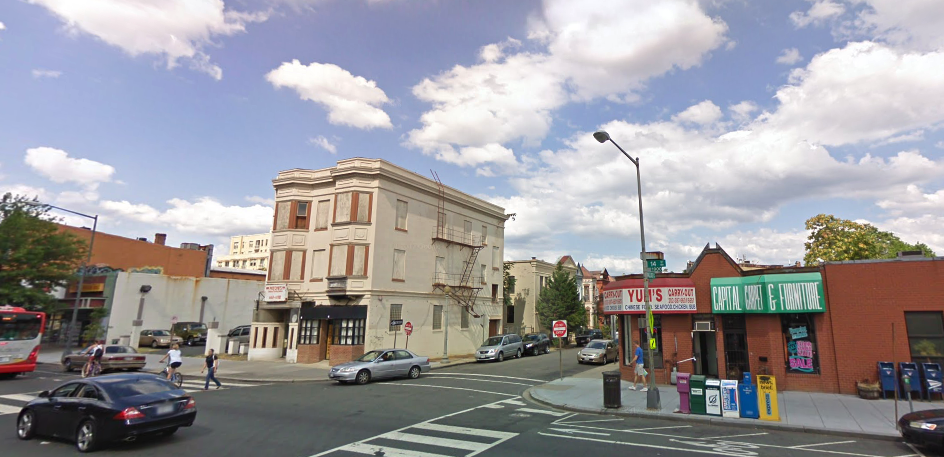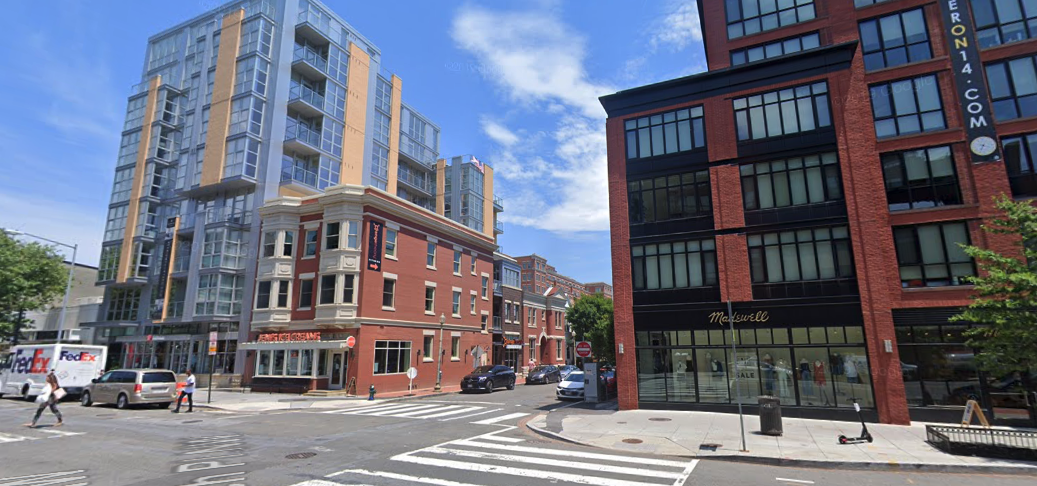Why Does So Much High-End Redevelopment Occur in Once-Devastated Neighborhoods?
Emily Badger at the New York Times has a well-researched piece out titled "Riots Long Ago, Luxury Living Today", which poses the question of why in some cities, "high-end redevelopment has risen directly on top of neighborhoods historically scarred by rioting" or other tragic forms of decline or devastation.
It's an interesting and thoughtful analysis that avoids easy generalizations. And it leads, I think, to an important set of questions—less explored in Badger's piece—about what an alternative, less cataclysmic and more community-driven model of neighborhoood investment looks like. We'll briefly explore below why that alternative so rarely happens.


Badger explains, using exampless such as 14th and U Streets in Washington, DC—in 1968 the organizing site for the Rev. Dr. Martin Luther King Jr.'s Poor People's Campaign, where, today, $2,500 a month will get you a one-bedroom apartment with concierge services next to the Lululemon:
There is an economic logic to it: The sheer scale of harm to Black neighborhoods—from the conditions that led to unrest, from the buildings that burned then, from the years of neglect that followed—made it easier, when the time finally came years later, for developers and new businesses and residents to amass wealth.
“You think of a forest fire, with the clearing of the land,” said Nizam Ali, whose family restaurant, Ben’s Chili Bowl, is one of the rare Black-owned businesses near 14th and U to survive the rioting and the decline afterward. “Unfortunately,” he said, “it was racism and murder that was the clearing of the land.”
It was redlining and segregation, then arson, depopulation, slumlords, the drug trade, overincarceration, inflated property taxes and denied home equity loans.
Development, by one definition, is simply anything that increases the value of a piece of land by more than it costs to do so. The developer profits by pocketing the difference. The biggest windfall profits are thus available in places where the rent gap—the difference between the current use value of the land and the potential use value if redeveloped—is highest. This isn't the story of most neighborhoods, Badger stresses, just a very noteworthy variant on a more complex overall trend:
Far more of the Black neighborhoods nationwide that experienced unrest, or the forces that drove it, have remained in decline than have gentrified. And past unrest is no required precondition for gentrification today. But the economics that turn destruction into opportunity are most visible in these places.
And because entire communities had been devalued, it was possible to redevelop at the scale of entire neighborhoods.
Why Don't We See More Incremental Redevelopment Instead?
Badger's piece explains why some places that have been in disarray for decades are attractive investments for big developers who want to reinvent a whole neighborhood. There is still a question, though, of why recovery doesn't start sooner. How does an Over-the-Rhine in Cincinnati, with its legendary stock of attractive 19th century buildings, sit there for so long without an army of rehabbers getting to work? And why do so many neighborhoods fall into a long, painful decline without an obvious catalyst like a fire or riot? Why doesn’t something arrest that decline sooner?
Beautiful historic buildings in disrepair and abandonment in Over-the-Rhine, Cincinnati (Source: Google Maps)
Badger draws attention to racism’s role as an accelerant. But the same dynamic can be found even in some cities that are almost entirely white. There are structural, economic factors that help explain.
In Sarasota, Florida, where I live, a high-end neighborhood has risen in less than 10 years on the site of the area's original Black community, adjacent to downtown, after decades in which vacant lots pockmarked the area. The new version is a nice place to live if you have the money to enjoy it, but I’d rather have a continuation of the community that once existed there, a place built and shaped by members of that community that allowed them to build generational wealth. What would that have taken—other than a simple and incomplete answer of “less racism”?
A big part of this kind of story is how structural barriers render incremental, community-led reinvestment (what Jane Jacobs called "unslumming") almost impossible. As a result, the flow of investment in neighborhoods is a trickle or a fire hose, nothing in between.
The result is most of the functional consequences of Urban Renewal, even absent the formal policy of Urban Renewal. In the '50s and '60s, autocratic planners literally drew maps that wiped whole neighborhoods out of existence. Today, they don't—but it's easy to understand why conspiratorial views of the city and developers making smoke-filled-room schemes to gentrify a neighborhood persist.
The fact that most poor neighborhoods aren't gentrifying is far from a “Well, actually…” gotcha rebuttal. It’s better understood as the other side of the same coin. The point is that very few neighborhoods anywhere are organically "unslumming." They're either slowly declining, or radically transforming. Trickle or fire hose.
There are a lot of mechanisms that explain this. One is redlining, which still occurs today. The Home Owners’ Loan Corporation (HOLC) maps of the 1930s and 1940s that largely dictated where you couldn’t get a mortgage are gone, but horrifying disparities in lending are not. For example, see this study out of Chicago.
Another is the stigma attached to "bad" neighborhoods. Expressed through attitudes about schools, approaches to policing, etc. It means that neighborhoods tend to suddenly flip from "bad" to "good" in the middle-class imagination instead of being understood with nuance.
Regulatory barriers to small-scale development are another huge factor. Convoluted codes, parking minimums, long approval timelines, high permit and application fees, and the norm in most cities that you now need a variance to build virtually anything are all part of it. These fixed costs (and uncertainty and delay, which ultimately equal money) may be a drop in the bucket if you're razing a whole block to build 200 apartments. But they're crippling if you're rehabbing a historic 8-unit building or opening a mom-and-pop storefront. So many small-scale developers are simply deterred from doing that work.
This is something I wish more gentrification critics (with whom I agree on the urgency of the problem) discussed: there's a tendency to view "developers" as a monolithic big bad, and thus reasonably assume that what smacks of "deregulation" is a giveaway to The Developers. But on many of these issues of regulatory barriers, the interests of small-scale developers (who tend to be from and meaningfully invested in the neighborhood) and large-scale developers (who don't) are opposed, not aligned.
Huge developers love convoluted planning processes, in fact. It shuts out competition and favors insiders who know the game, know the players, and can hire an expensive land use law firm to get their proposal through all the necessary hearings and commission votes.
When you see stuff like a Whole Foods with hundreds of apartments on top rising in a historically low-income Black neighborhood, that didn't happen by accident. But nor was it a smoky backroom deal. It didn't have to be. The system is structured to produce these outcomes.
Bringing Back “Unslumming”
How to change it is a huge, open question, but there a few things I would humbly propose as part of a needed pendulum swing:
End parking minimums.
Make far more mixed uses and small-scale projects available as-of-right.
Build up community-based lending institutions, local investment co-ops and crowdfunding.
Look to limited-equity co-ops and land trusts as ways of ensuring affordability and income diversity in neighborhoods at risk of residential or commercial displacement.
Reorient public investment. Our goal should be a thousand small-scale projects rather than 5 or 10 huge ones. Massive public investments, often in transportation infrastructure, distort land value, which contributes to the fire-hose development phenomenon.
Reorient planning process toward humbly seeing and responding to residents' real struggles—what barriers can we remove right now?—and away from "public engagement" processes that mostly replicate status-quo bias and overrepresent groups with the most political capital.
The system is structured to favor top-down cataclysmic money over local cultivation of places that serve their inhabitants. Undoing that will require conscious intention and lots of humility.
(Cover photo: Ted Eytan via Flickr. Creative Commons license.)


Daniel Herriges has been a regular contributor to Strong Towns since 2015 and is a founding member of the Strong Towns movement. He is the co-author of Escaping the Housing Trap: The Strong Towns Response to the Housing Crisis, with Charles Marohn. Daniel now works as the Policy Director at the Parking Reform Network, an organization which seeks to accelerate the reform of harmful parking policies by educating the public about these policies and serving as a connecting hub for advocates and policy makers. Daniel’s work reflects a lifelong fascination with cities and how they work. When he’s not perusing maps (for work or pleasure), he can be found exploring out-of-the-way neighborhoods on foot or bicycle. Daniel has lived in Northern California and Southwest Florida, and he now resides back in his hometown of St. Paul, Minnesota, along with his wife and two children. Daniel has a Masters in Urban and Regional Planning from the University of Minnesota.